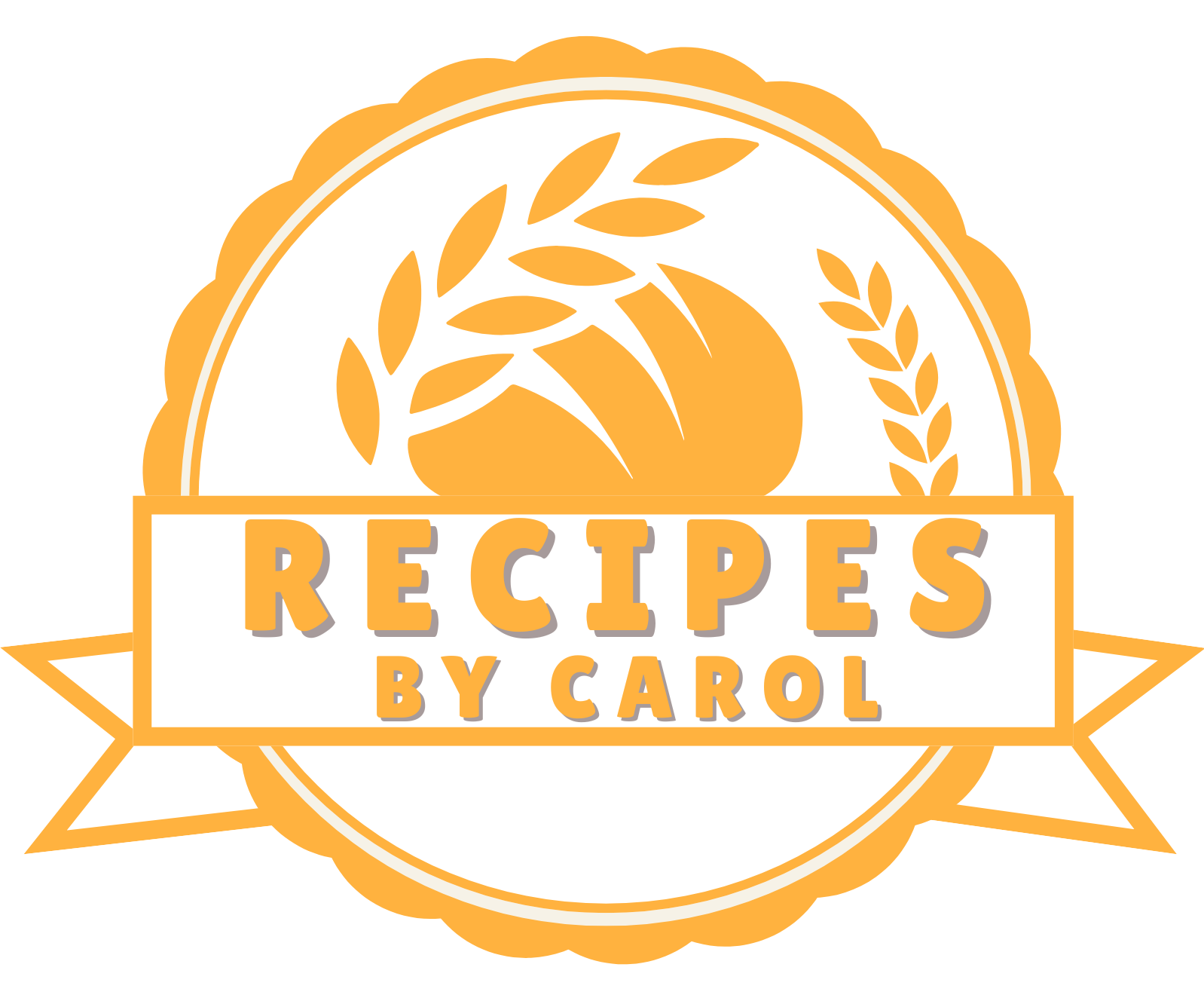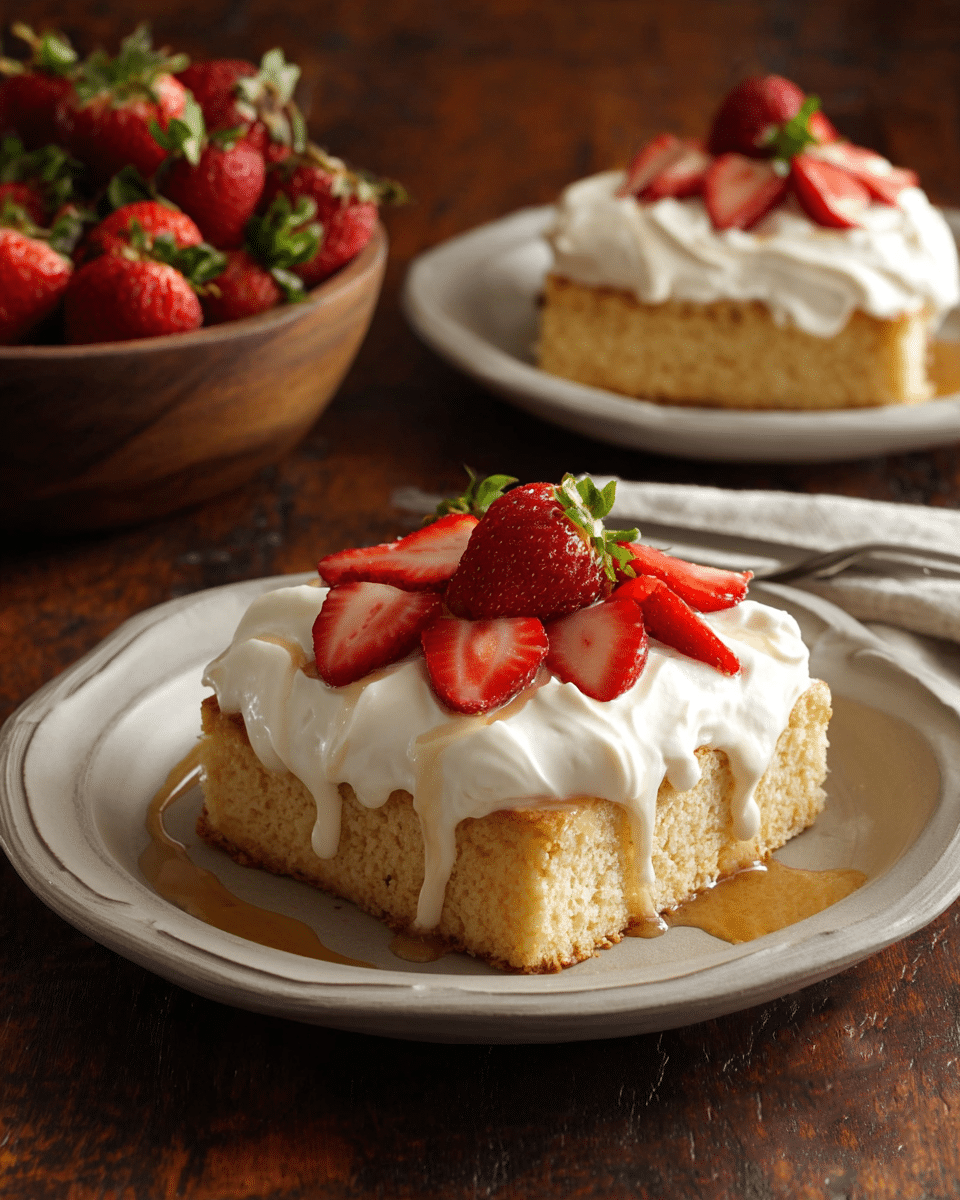The Tres Leches Cake is a treasured dessert across Latin America, especially in Mexico where it’s a mainstay at birthdays and special occasions. This fluffy vanilla cake is unique for being soaked in a rich combination of three milks condensed milk, evaporated milk, and cream giving it a dreamy, moist texture that’s second to none.
Topped with airy vanilla whipped cream and your choice of fresh fruit or canned peaches, this cake becomes the ultimate showstopper. While it’s decadent, it’s also surprisingly easy to make. Perfect for parties, family gatherings, or when you simply crave a slice of something sweet and nostalgic.
Full Recipe:
Ingredients:
For the Cake:
-
Butter (for greasing the pan)
-
1 ¼ cups all-purpose flour (sifted)
-
1 teaspoon baking powder
-
¼ teaspoon salt
-
½ cup unsalted butter (melted and cooled)
-
1 cup sugar
-
5 whole eggs
-
1 teaspoon vanilla extract
For the Milk Mixture:
-
1 (14 oz) can sweetened condensed milk
-
1 (12 oz) can evaporated milk
-
1 cup heavy whipping cream or 1 can Media Crema
-
1 ½ teaspoons vanilla extract
-
4 tablespoons rum or brandy (optional)
For the Frosting:
-
1 ¼ cups heavy whipping cream
-
4 tablespoons sugar
-
1 teaspoon vanilla extract
Garnish:
-
Fresh fruit such as strawberries, kiwi, or canned peaches and mangos (add just before serving)
Directions:
-
Preheat oven to 325°F (163°C) and adjust rack to the middle. Grease and flour a 13×9 inch baking pan.
-
In a medium bowl, whisk together flour, baking powder, and salt.
-
Beat eggs one at a time using a hand or stand mixer on medium speed for 45–60 seconds.
-
Gradually add sugar until incorporated and fluffy.
-
Reduce speed to low, slowly pour in melted butter and vanilla.
-
Add flour mixture gradually, folding in with a spatula. Do not overmix.
-
Pour batter into prepared pan and spread evenly.
-
Bake for 30–35 minutes until light golden or a toothpick inserted comes out clean.
-
Let cake cool completely, then poke holes all over with a fork or skewer.
-
For the milk mixture, whisk all milks, vanilla, and rum (if using) in a saucepan. Warm over low heat until combined.
-
Pour warm milk mixture over the cooled cake. Let it absorb at room temp for a few minutes, then refrigerate for at least 4 hours or overnight.
-
For the frosting, beat cold heavy cream, sugar, and vanilla on medium speed until soft peaks form (about 2 minutes).
-
Spread whipped cream over chilled cake. Garnish with fresh or canned fruit before serving.
Prep Time: 15 minutes | Cooking Time: 35 minutes | Total Time: 50 minutes
Kcal: 322 kcal | Servings: 12 servings
Tres Leches Cake: A Soaked Slice of Latin American Tradition
When it comes to desserts that manage to be both rich and refreshing, few can compete with the charm of Tres Leches Cake. This iconic Latin American treat has found its way into celebrations across the globe, transcending borders with its tender crumb and luscious soak of sweetened milk. Whether it’s enjoyed at a birthday party in Mexico, a family gathering in Puerto Rico, or a Sunday dinner in Texas, Tres Leches Cake is a dessert that always feels like a special occasion.
But what exactly is Tres Leches Cake, and why does it hold such an esteemed place in Latin American cuisine? In this article, we’ll explore the origins of this beloved dessert, its cultural significance, expert tips for perfecting it, and creative ways to make it your own.
What Is Tres Leches Cake?
The name “Tres Leches” translates to “Three Milks” in Spanish, and as you might guess, it refers to the three types of milk used to soak the cake: sweetened condensed milk, evaporated milk, and heavy cream (or Media Crema, a shelf-stable Mexican-style cream). This trio of dairy creates a luxurious, custard-like texture that transforms a simple vanilla cake into something far more indulgent.
Despite its moistness, Tres Leches Cake is never soggy. When made correctly, it absorbs the milk mixture while maintaining its structure, resulting in a dessert that’s spongy, silky, and surprisingly light for such a rich flavor profile.
A Slice of History: Origins and Evolution
The origins of Tres Leches Cake are often debated, with culinary roots stretching across multiple Latin American countries. Some food historians suggest it was born out of the promotional efforts by Nestlé in the mid-20th century. In the 1950s, the company began printing recipes for a milk soaked cake on the back of cans of La Lechera (sweetened condensed milk), encouraging home cooks to experiment with condensed and evaporated milk.
While Mexico, Nicaragua, and Cuba all lay claim to the dessert’s invention, the earliest documented appearances of Tres Leches Cake as we know it today appeared in Mexican cookbooks and food packaging. Since then, its popularity has spread throughout Central and South America, with regional variations popping up everywhere.
Today, it’s not uncommon to find this cake gracing tables in the United States, especially in areas with large Latino populations. It’s even made appearances in fine dining menus and upscale bakeries, often with unique modern twists.
Cultural Significance
In Latin America, Pastel de Tres Leches is more than just dessert it’s a celebration. From baptisms and quinceañeras to weddings and holidays, this cake is a go-to centerpiece at festive occasions. The reason? It’s easy to prepare in advance, serves a crowd, and never fails to delight.
It also serves as a powerful culinary connection to heritage and memory. Many people recall eating it at their grandmother’s kitchen table, or as part of a larger community celebration. The emotional ties run deep each bite carries stories of family, tradition, and love.
In fact, many households have their own unique versions, often passed down through generations. Some swear by a spongier cake base, while others prefer a denser crumb that takes longer to soak but delivers more flavor with each forkful.
Key Tips for Success
While the basic concept of Tres Leches Cake is straightforward, achieving the perfect texture and flavor can take practice. Here are some pro tips to keep in mind:
-
Use a cake with structure. A sponge-like or dense cake works best, as it can absorb the milk mixture without falling apart.
-
Don’t skip the poking. Before adding the milk, use a fork or skewer to poke holes all over the cake. This ensures even absorption and prevents pooling.
-
Let it rest. The cake should chill in the fridge for at least 4 hours or better yet, overnight. This gives it time to soak up every drop of the milky goodness.
-
Whip it right. The whipped cream topping should be light but structured. For best results, chill your mixing bowl and beaters ahead of time.
-
Add fruit last minute. If you’re decorating with fruit like strawberries or kiwi, add them just before serving to maintain freshness and visual appeal.
Variations Across Regions
As with many beloved recipes, variations of Tres Leches Cake are abundant. While the classic version sticks to vanilla sponge, whipped cream, and three kinds of milk, adventurous bakers have found ways to tweak the formula:
-
Chocolate Tres Leches – Add cocoa powder to the batter and chocolate shavings on top for a decadent twist.
-
Coffee-Infused – Mix espresso or coffee liqueur into the milk soak for mocha-flavored indulgence.
-
Tropical Style – Use coconut milk in place of cream, and top with pineapple, mango, or toasted coconut flakes.
-
Spiced Version – Add cinnamon, nutmeg, or cardamom to the batter for a warm, aromatic take.
-
Cupcake Format – Perfect for parties, these mini versions can be served in jars or liners, each individually soaked and topped.
Each variation adds its own personality while keeping the heart of the dessert intact: that luscious, creamy interior that melts in your mouth.
Serving Suggestions
Tres Leches Cake is best served cold, making it a refreshing treat even in hot weather. The chilled temperature enhances the creaminess and balances the sweetness of the milk.
Serve it with:
-
A sprinkle of cinnamon on top for added warmth
-
A drizzle of caramel or dulce de leche for extra decadence
-
Fresh berries to cut through the richness
-
A hot beverage like Café de Olla (Mexican spiced coffee) or Mexican hot chocolate to complement the sweetness
This cake is also ideal for making ahead. In fact, most bakers agree it tastes even better the next day, once the milk has had more time to fully integrate into the crumb.
A Dessert for All Seasons
Though deeply rooted in Latin American culture, Tres Leches Cake has universal appeal. It manages to walk the line between indulgent and light, between nostalgic and new. Its simplicity makes it approachable for beginner bakers, while its elegant presentation makes it a stunner on any table.
Moreover, it invites creativity. You can dress it up or down, make it traditional or trendy, bake it for your abuela or for a baby shower.
Its versatility is part of what has allowed it to endure for decades and likely centuries in kitchens across the world.
Conclusion:
Tres Leches Cake is more than just a dessert. It’s a beloved symbol of Latin American hospitality, family, and celebration. With each bite, you experience layers of tradition, culinary ingenuity, and sheer joy.
Whether you stick to the authentic version or create your own variation, what matters most is the love you pour into making it. From its humble pantry ingredients to its luxurious finish, this cake reminds us that food doesn’t need to be complicated to be memorable.
So the next time you want to impress a crowd or just treat yourself consider making a Tres Leches Cake. Serve it cold, savor it slowly, and share the story behind it. Because the best recipes don’t just feed the body they nourish the soul.






